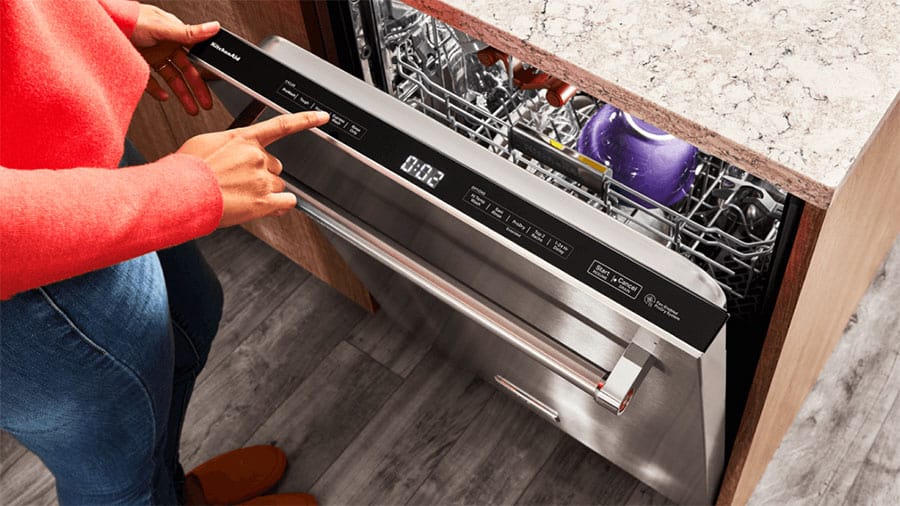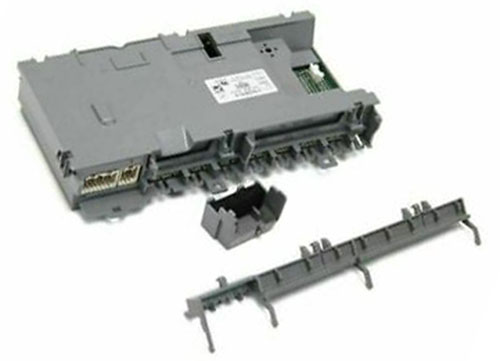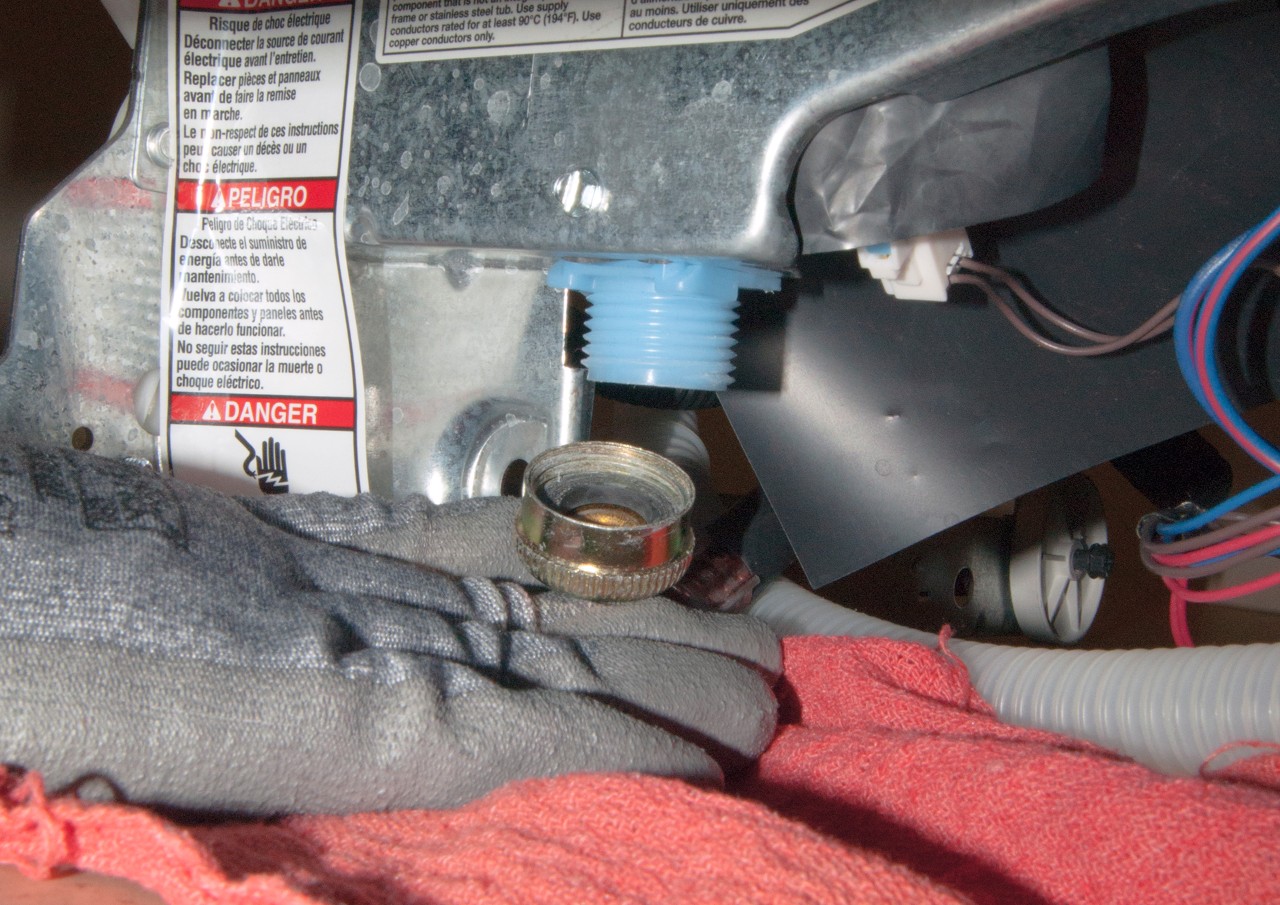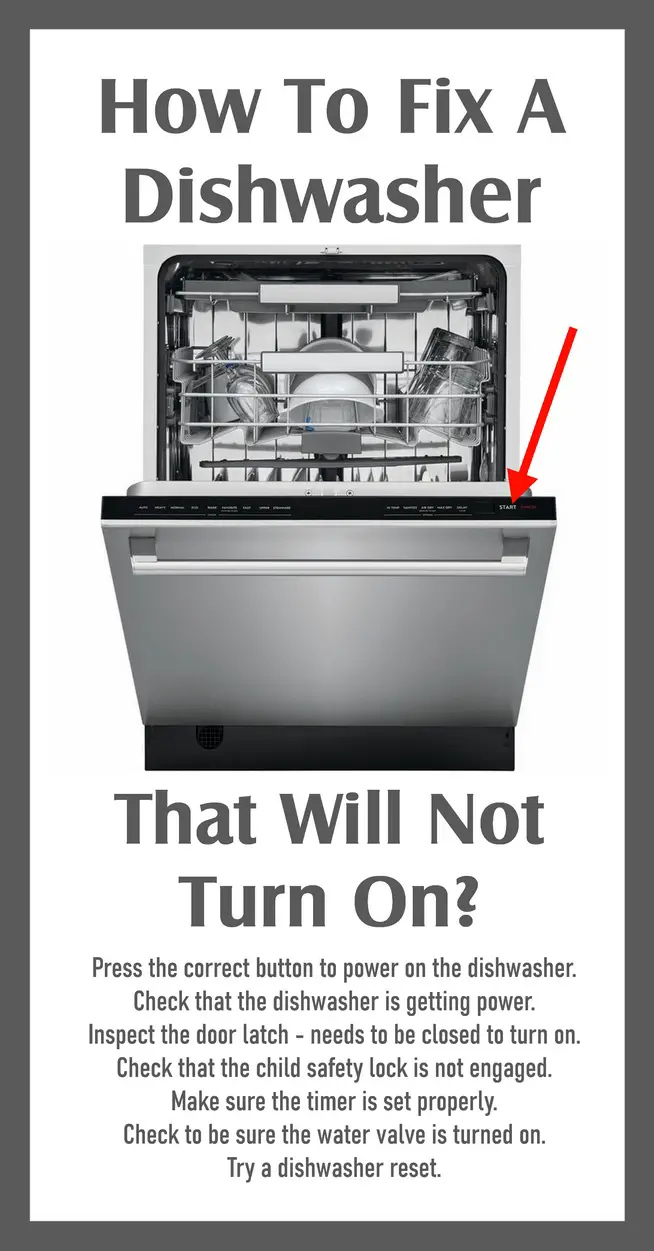How to Fix a KitchenAid Dishwasher That Won't Start
If your KitchenAid dishwasher won't start, there could be a few different reasons why. But don't worry, we've got you covered with some troubleshooting tips to get your dishwasher up and running again.
First, make sure the dishwasher is properly plugged in. It may seem obvious, but sometimes the simplest solutions are overlooked. Next, check the door latch to make sure it is secure and functioning properly. If the door is not closing completely, the dishwasher will not start.
If the dishwasher still won't start, it could be an issue with the control board. Try resetting the control board by turning off the power to the dishwasher for a few minutes and then turning it back on. If this doesn't work, you may need to replace the control board entirely.
How to Troubleshoot a KitchenAid Dishwasher That Won't Drain
There's nothing worse than a dishwasher that won't drain and leaves your dishes sitting in dirty water. If this is happening with your KitchenAid dishwasher, there are a few things you can do to troubleshoot the issue.
First, check the drain hose for any clogs or kinks. These can prevent water from draining properly. If the hose appears clear, it could be an issue with the drain pump. Try cleaning the pump to see if that solves the problem. If not, you may need to replace the drain pump.
Another potential culprit for a dishwasher that won't drain is a faulty drain valve. This valve is responsible for allowing water to flow out of the dishwasher. If it is not functioning properly, it could be the reason for the drainage issue.
How to Reset a KitchenAid Dishwasher
If you're having problems with your KitchenAid dishwasher, sometimes a simple reset can do the trick. This can help to clear any errors or malfunctions and get your dishwasher back to working properly.
To reset your KitchenAid dishwasher, start by turning off the power to the dishwasher. You can do this by unplugging it or flipping the circuit breaker. Leave the power off for a few minutes, then turn it back on. This should reset the dishwasher and clear any errors.
How to Clean the Filter in a KitchenAid Dishwasher
Regularly cleaning the filter in your KitchenAid dishwasher is important to keep it running efficiently. A clogged filter can lead to poor cleaning results and even cause issues with draining. Here's how to clean the filter in your dishwasher.
Start by removing the bottom rack of the dishwasher. Then, locate the filter cover and remove it. You may need to use a screwdriver to unscrew the cover. Once the cover is removed, you can take out the filter and clean it with warm, soapy water. Make sure to remove any debris or buildup that may be on the filter. Once clean, replace the filter and cover.
How to Replace the Control Board in a KitchenAid Dishwasher
If resetting the control board did not fix the issue with your KitchenAid dishwasher, you may need to replace it. This may seem like a daunting task, but with the right tools and instructions, it can be done easily.
First, make sure to turn off the power to the dishwasher. Then, remove the screws that hold the control panel in place. Gently pull the panel away from the dishwasher and disconnect the wires from the control board. Take note of where each wire is connected so you can reattach them correctly later. Remove the old control board and replace it with the new one, connecting the wires as they were before. Finally, reattach the control panel and turn the power back on to test the dishwasher.
How to Fix a KitchenAid Dishwasher That Won't Fill With Water
If your KitchenAid dishwasher won't fill with water, it may be a problem with the water inlet valve. This valve controls the flow of water into the dishwasher and can become clogged or faulty over time.
To fix this issue, start by turning off the power to the dishwasher. Then, locate the water inlet valve and inspect it for any clogs or damage. If it appears to be clogged, clean or replace the valve. If it is damaged, it will need to be replaced entirely. Once the valve is clean or replaced, turn the power back on and test the dishwasher to see if it fills with water properly.
How to Replace the Door Latch on a KitchenAid Dishwasher
The door latch on a dishwasher is an important component that ensures the door stays securely closed during a cycle. If the latch is damaged or not functioning properly, it can cause issues with the dishwasher starting or running properly.
To replace the door latch on your KitchenAid dishwasher, start by turning off the power to the appliance. Then, remove the screws that hold the latch in place and disconnect the wires from the old latch. Connect the wires to the new latch and screw it back into place. Finally, turn the power back on and test the dishwasher to see if the new latch is working correctly.
How to Fix a KitchenAid Dishwasher That Won't Drain
A dishwasher that won't drain is a common problem that can be caused by a few different issues. We've already covered troubleshooting tips for this issue, but there is one more potential solution to try.
Check the air gap on the sink to make sure it is not clogged. This is a small device that prevents water from backing up into the dishwasher. If it is clogged, it can cause drainage issues. Simply remove the cap and clean out any debris, then replace the cap and run a cycle to see if the dishwasher drains properly.
How to Replace the Heating Element in a KitchenAid Dishwasher
The heating element in a dishwasher is responsible for heating the water during a cycle. If the water is not getting hot enough, it could be an indication that the heating element needs to be replaced.
To replace the heating element in your KitchenAid dishwasher, start by turning off the power to the appliance. Then, remove the bottom panel of the dishwasher to access the heating element. Disconnect the wires from the old element and remove it. Replace it with the new element and reconnect the wires. Finally, test the dishwasher to see if the water is heating properly.
How to Fix a KitchenAid Dishwasher That Won't Turn On
If your KitchenAid dishwasher won't turn on at all, there could be a few different issues at play. We've already covered some troubleshooting tips, but if those don't work, it may be a problem with the door switch.
The door switch is responsible for sensing when the door is closed and allowing the dishwasher to start. If it is faulty, the dishwasher will not turn on. To replace the door switch, start by turning off the power to the dishwasher. Then, remove the screws that hold the switch in place and disconnect the wires. Connect the wires to the new switch and screw it back into place. Finally, turn the power back on and test the dishwasher to see if it turns on properly.
With these tips and troubleshooting steps, you should be able to fix most common issues with your KitchenAid dishwasher. However, if the problem persists, it may be time to call a professional for further assistance.
The Benefits of Choosing a KitchenAid Dishwasher with a Red Light Indicator

Efficiency and Convenience in One Appliance
 KitchenAid dishwashers are known for their durability, performance, and innovative features that make kitchen clean-up a breeze. One of their latest models, equipped with a red light indicator, takes it up a notch by providing even more efficiency and convenience for homeowners.
KitchenAid dishwashers are known for their durability, performance, and innovative features that make kitchen clean-up a breeze. One of their latest models, equipped with a red light indicator, takes it up a notch by providing even more efficiency and convenience for homeowners.
Kitchen aid dishwasher red light is a feature that indicates the status of the dishwasher's cycle. When the dishwasher is running, the red light will turn on, and when the cycle is complete, the light will turn off. This may seem like a small feature, but it has many benefits that make it a must-have for any modern kitchen.
Time-Saving and Energy-Efficient
 With the
kitchen aid dishwasher red light
feature, you no longer have to constantly check on your dishwasher to see if the cycle has finished. The red light indicator tells you when it's done, saving you time and effort. This is especially convenient for those who have a busy schedule, allowing them to multitask while the dishwasher is running.
With the
kitchen aid dishwasher red light
feature, you no longer have to constantly check on your dishwasher to see if the cycle has finished. The red light indicator tells you when it's done, saving you time and effort. This is especially convenient for those who have a busy schedule, allowing them to multitask while the dishwasher is running.
Moreover, this feature also promotes energy efficiency. Often, we tend to open the dishwasher mid-cycle to check if the dishes are clean, prolonging the cycle and using more energy. With the red light indicator, you know exactly when the cycle is complete, reducing unnecessary energy consumption.
Aesthetically Pleasing
 Aside from its practical benefits, the
kitchen aid dishwasher red light
also adds a touch of style to your kitchen. The red light not only stands out but also complements the sleek design of KitchenAid dishwashers. It adds a modern and sophisticated look to your kitchen, making it a statement piece.
Aside from its practical benefits, the
kitchen aid dishwasher red light
also adds a touch of style to your kitchen. The red light not only stands out but also complements the sleek design of KitchenAid dishwashers. It adds a modern and sophisticated look to your kitchen, making it a statement piece.
In addition, the red light indicator is also helpful for those with visual impairments or have difficulty hearing the dishwasher's beeping sound. This feature provides a visual cue that the cycle is complete, making it more inclusive for everyone in the household.
In conclusion, the kitchen aid dishwasher red light feature is a game-changer in terms of efficiency, convenience, and aesthetics. It's a small but significant addition to KitchenAid dishwashers that greatly enhances the overall experience. So, if you're in the market for a new dishwasher, consider choosing one with a red light indicator and see the difference it can make in your daily life.












































:max_bytes(150000):strip_icc()/cleaning-dishwasher-filter-a8f9d5c0bb11465fbe12f79afb86dd35.jpg)























































/media/img/prizes/prizegrab-sleep-number-bed-sweepstakes.jpg)



